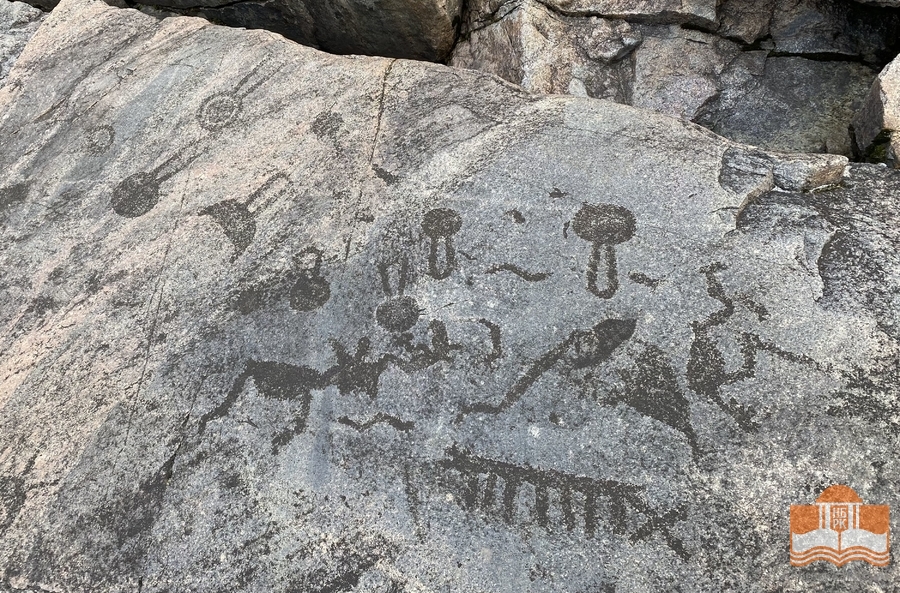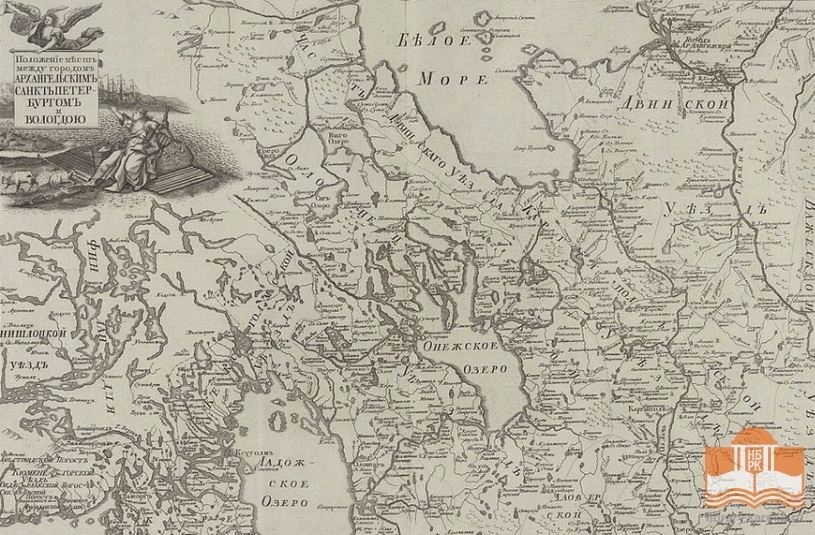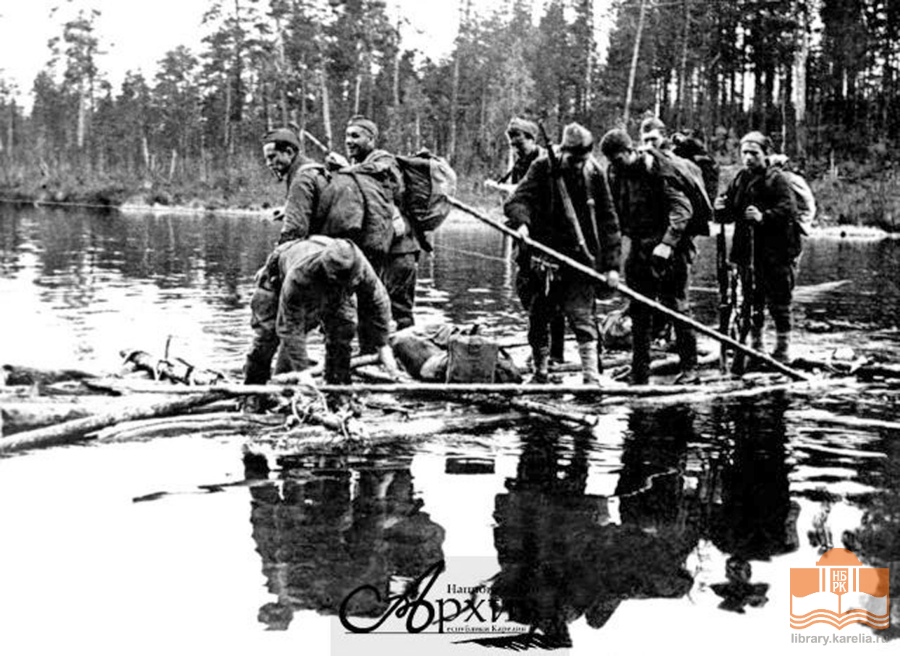The Karelian region was freed from ice about 8,000 years BC. People lived in small groups at great distances, separated by endless forests. Earlier archaeological finds and world-famous rock carvings help us to learn about their life and way of life. Historically, three tribal groups have developed in this area: the Karelians who lived in the west and north of Ladoga; Vepsians who lived between Ladoga and Onego lakes and the Sámi (Laps) who occupied almost the entire area of the present Karelia. In the west, the Karelian peoples were limited to the Sum and Em tribes of the Finno-Ugric peoples, in the south to the Slavs and Izhora.
 In the 10th and 11th centuries, the southern part of Karelia came under the influence of the ancient Russian state, and Slavic settlements began to appear in this area and in Pomorie. In the 12th century Karelia became part of the Novgorod princedom. Its development caused the growth of hunting, sea fishing, salt production and ironworking. In the 14th and 15th centuries several trading places were born - Olonets, Pudozh, Povenets, Suma and Vytegra.
In the 10th and 11th centuries, the southern part of Karelia came under the influence of the ancient Russian state, and Slavic settlements began to appear in this area and in Pomorie. In the 12th century Karelia became part of the Novgorod princedom. Its development caused the growth of hunting, sea fishing, salt production and ironworking. In the 14th and 15th centuries several trading places were born - Olonets, Pudozh, Povenets, Suma and Vytegra.
The introduction of Christianity in Karelia is connected to the name of Alexander Nevsky's father Jaroslav Vsevolodovich. Since 1478, Karelia with Novgorod joined the Russian state. At the end of the 17th century, the first cast iron and ironwork facilities were built in Zaonezhie. The number of monasteries grew rapidly, and the Solovetsky monastery in the White Sea became particularly strong.
The Great Northern War of 1700-1721 gave a strong impetus to the industrial development of Karelia. At the beginning of the 18th century, metallurgia developed significantly. Several new factories were built on the order of Peter the Great. The largest of these is the Petrovski cannon-foundry, which was founded in 1703 at the mouth of the Lososinka River. Petrovskaya Sloboda was born around it, which was named Petrozavodsk city by Empress Catherine II decree on March 21, 1777. From 1784, Petrozavodsk was the center of the Olonets Governorate. The first governor of Petrozavodsk was the poet Gavrila Deržavin.

The name of Peter the Great will also be accompanied by the foundation of the first sanatorium in Russia near iron -rich springs. Those springs were found in 1714. Martsialnyje Vody - Sanatorium is located 50 km from Petrozavodsk.
In the 16th and 17th centuries, wooden architecture began to flourish in the Karelian region. The art of icons in this region developed in its own way. Until now, there are many genres of folklore here.
By the end of the 19th century, the Governorate's industrial development had begun: in 30 years 10 factories with the latest technology were built, leading to a rapid increase in wood exports.
November 1917 - March 1918 Soviet power was born in Karelia, on 8 June 1920 the Karelian Workers' Commune was formed, which was transformed on 25 July 1923 into the Autonomous Socialist Republic of Karelia. The power industry is developing in the Republic: the Kondopoga hydropower plant and 15 smaller power plants have been built. The logging, wood processing, and paper industries were transformed dramatically.
On 1 March 1940, Karelia was given a new status and became the Karelian-Finnish Soviet Socialist Republic. Its area increases with the new territories transferred to the Soviet Union from Finland after the Winter War.

During the Great Patriotic War, two-thirds of the republic's territory, which accounted for 83% of industrial production, was occupied. At the end of 1944, Karelia was liberated, and during the economic recovery from the war, the autonomous status of the republic was restored in 1956. New buildings are rising, non-ferrous metal industry and iron industry are developing, machine building and energy are enhanced. Karelia will become a leading position in the field of chemical wood processing.
The changes in the Soviet Union in the late 1980s have affected the Republic of Karelia. In 1991, during the disintegration of the Soviet Union, the Karelian-Finnish Socialist Soviet Republic became the Republic of Karelia.
Today, the republic consists of 16 municipalities: the National District of Olonets, the National District of Kalevala, the Belomorsk District, the Medvezhyegorsk District, the Kem District, the Konopoga District, the Lahdenpohja District, the Loukhi District, the Muyezersky District, the Pitkyaranta District, the Pryazha National District, the Pudozh District, the Segezha District, the Sortavala District, the Suoyarvi District, the Prionezhsky District and two urban districts: Petrozavodsk and Kostomuksha. There are 802 communes in the Republic of Karelia, of which 13 are cities: Petrozavodsk, Belomorsk, Kem, Kondopoga, Kostomuksha, Lahdenpohja, Medvezhyegorsk, Olonets, Pitkyaranta, Pudozh, Segezha, Sortavala, Suoyarvi.
The capital of the Republic Petrozavodsk is the Russia's City of Military Glory.
 In the 10th and 11th centuries, the southern part of Karelia came under the influence of the ancient Russian state, and Slavic settlements began to appear in this area and in Pomorie. In the 12th century Karelia became part of the Novgorod princedom. Its development caused the growth of hunting, sea fishing, salt production and ironworking. In the 14th and 15th centuries several trading places were born - Olonets, Pudozh, Povenets, Suma and Vytegra.
In the 10th and 11th centuries, the southern part of Karelia came under the influence of the ancient Russian state, and Slavic settlements began to appear in this area and in Pomorie. In the 12th century Karelia became part of the Novgorod princedom. Its development caused the growth of hunting, sea fishing, salt production and ironworking. In the 14th and 15th centuries several trading places were born - Olonets, Pudozh, Povenets, Suma and Vytegra. The name of Peter the Great will also be accompanied by the foundation of the first sanatorium in Russia near iron -rich springs. Those springs were found in 1714. Martsialnyje Vody - Sanatorium is located 50 km from Petrozavodsk.
The name of Peter the Great will also be accompanied by the foundation of the first sanatorium in Russia near iron -rich springs. Those springs were found in 1714. Martsialnyje Vody - Sanatorium is located 50 km from Petrozavodsk. During the Great Patriotic War, two-thirds of the republic's territory, which accounted for 83% of industrial production, was occupied. At the end of 1944, Karelia was liberated, and during the economic recovery from the war, the autonomous status of the republic was restored in 1956. New buildings are rising, non-ferrous metal industry and iron industry are developing, machine building and energy are enhanced. Karelia will become a leading position in the field of chemical wood processing.
During the Great Patriotic War, two-thirds of the republic's territory, which accounted for 83% of industrial production, was occupied. At the end of 1944, Karelia was liberated, and during the economic recovery from the war, the autonomous status of the republic was restored in 1956. New buildings are rising, non-ferrous metal industry and iron industry are developing, machine building and energy are enhanced. Karelia will become a leading position in the field of chemical wood processing.